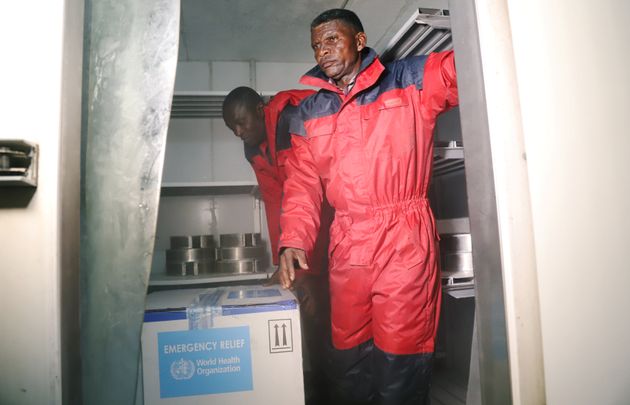
The Democratic Republic of Congo now faces a “very high” public health risk from Ebola after the disease was confirmed in one patient in a major city, the World Health Organisation said on Friday.
The reassessment came after the first confirmed case in Mbandaka, a city of around 1.5 million. Previous reports of the disease had all been in remote areas where Ebola might spread more slowly.
“The confirmed case in Mbandaka, a large urban centre located on major national and international river, road and domestic air routes increases the risk of spread within the Democratic Republic of the Congo and to neighbouring countries,” the World Health Organisation (WHO) said.
According to the agency, 44 Ebola cases were reported in the country between April 4 and May 14 – 3 confirmed, 20 probable and 21 suspected.
Mbandaka had three suspected cases in addition to the confirmed case.
Speaking to reporters on Thursday, WHO deputy director-general Peter Salama said the organisation was “not trying to cause any panic” by raising its previous risk assessment in the Democratic Republic of Congo (DRC).
“What we’re saying though is that urban Ebola is very different phenomenon to rural Ebola because we know that people in urban areas can have far more contacts so that means that urban Ebola can result in an exponential increase in cases in a way that rural Ebola struggles to do.”

Later on Friday, the WHO will convene an Emergency Committee of experts to advise on the international response to the outbreak, and decide whether it constitutes a “public health emergency of international concern.”
The risk to countries in the region is currently determined as ‘high’, but the global risk remains ‘low’.
The nightmare scenario is an outbreak in Kinshasa, the largest city in the DRC where millions live in unsanitary slums not connected to a sewer system.
The WHO is sending 7,540 doses of an experimental vaccine to try to stop the outbreak in its tracks, and 4,300 doses have already arrived in Kinshasa. It will be used to protect healthworkers and “rings” of contacts around each case.
The vaccine supplies will be enough to vaccinate 50 rings of 150 people, the WHO said.
As of 15 May, 527 contacts had been identified and were being followed up and monitored, it said.
What is Ebola?
Ebola is a rare and deadly disease caused by a virus. It spreads between people through direct contact with the bodily fluids of a person who is infected with or has died from the virus.
According to the NHS, symptoms of the virus – which typically appear “suddenly” between 2 and 21 days after becoming infected – include:
- fever
- headache
- joint and muscle pain
- severe muscle weakness
- a sore throat
Those suffering from the disease can also experience diarrhoea, vomiting, a rash, stomach pain and reduced liver and kidney function. They may bleed internally, as well as from the ears, nose, eyes or mouth.
There was a serious outbreak of Ebola in Africa between 2014 and 2015, with the crisis mainly affecting Guinea, Libera and Sierra Leone.